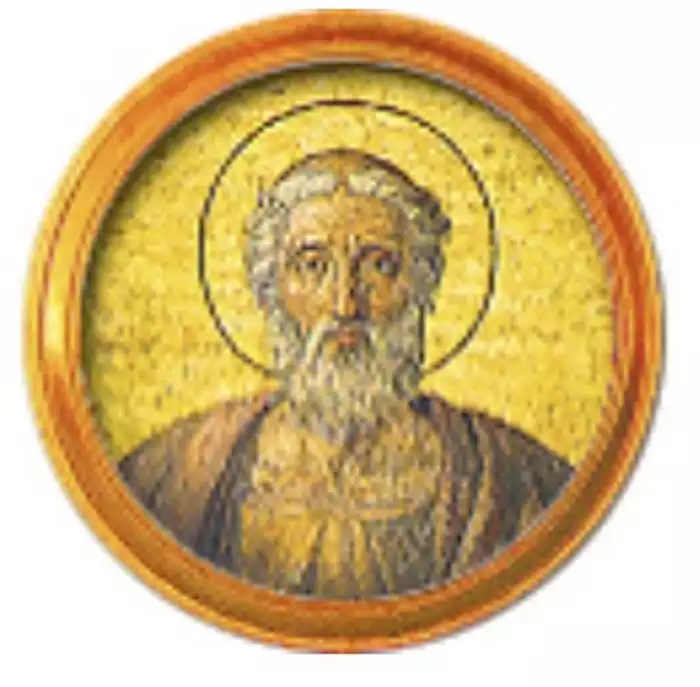
Pope Liberius, born circa 310 and deceased in 366 AD, led the Roman Church from 352 AD, during a time rife with doctrinal tumult, notably the Arian controversy. His tenure is marked by his staunch defense of the Nicene Creed amidst the challenges posed by Arianism, a theological dispute that questioned the divinity of Jesus Christ, shaping the early Christian Church’s doctrinal foundation.
Early Life and Ascension to Papacy
Liberius’s early life, prior to his papacy, is shrouded in limited historical records. However, his ascension to the papal throne in 352 AD came at a time of great theological and political upheaval. The Roman Empire, under Emperor Constantius II, was deeply embroiled in the Arian controversy. Arianism, propagated by the Alexandrian priest Arius, posited that Jesus Christ, while divine, was not co-eternal with the Father, thereby challenging the conventional understanding of the Trinity.
Liberius’s papacy began against this backdrop of doctrinal discord. His initial years were marked by efforts to maintain unity within the Church amidst growing Arian influence. Liberius was thrust into the heart of this controversy, not only as a spiritual leader but also as a key figure in the broader political landscape of the Empire. His role required a delicate balancing act: navigating the doctrinal disputes while maintaining the integrity and unity of the Church.
In dealing with the Arian controversy, Liberius’s approach was initially characterized by a cautious stance. He sought to uphold the Nicene Creed, established at the First Council of Nicaea in 325, which affirmed the consubstantiality of the Son with the Father. This creed became a central point of contention between Arian and orthodox Christians. Liberius’s efforts to defend the Nicene Creed would eventually lead him into direct conflict with Emperor Constantius II, a supporter of Arianism, setting the stage for a pivotal moment in his papacy and in the history of the early Church.
Conflict with Emperor Constantius and Exile
Pope Liberius’s steadfast commitment to the Nicene Creed eventually led to his direct confrontation with Emperor Constantius II. In 355, the Emperor, a staunch advocate of Arianism, summoned Liberius to the imperial court in Milan. Liberius, resolute in his defense of Nicene orthodoxy, refused to condemn Athanasius of Alexandria, a key opponent of Arianism. His defiance resulted in his exile to Thrace in 355, a significant event that underscored the tension between ecclesiastical authority and imperial power.
During his exile, Liberius’s resolve was put to the test. According to some historical accounts, he faced immense pressure to conform to Arian doctrines. However, Liberius’s determination to uphold the Nicene Creed remained unwavering, and his refusal to acquiesce to Arianism garnered widespread admiration and support within the Christian community.
In 358, under mounting pressure from Liberius’s supporters and the Roman clergy, Emperor Constantius allowed Liberius to return to Rome. His return marked a triumphant moment, reinforcing his position as a defender of orthodox Christianity. Despite his return, the Arian controversy continued to plague the Church, reflecting the ongoing struggle to define the nature of Christ’s divinity.
Pope Liberius’s tenure as Bishop of Rome is remembered for his critical role in the Arian controversy. His unwavering defense of the Nicene Creed, even in the face of imperial opposition and exile, highlights his commitment to orthodox Christian doctrine. While his papacy was marked by challenges and controversies, Liberius’s legacy is that of a pivotal figure in the history of the early Church, navigating through one of its most significant doctrinal disputes.
References
- Chadwick, Henry. The Church in Ancient Society. Oxford University Press, 2001.
- Hanson, R.P.C. The Search for the Christian Doctrine of God. T&T Clark, 1988.
- Kelly, J.N.D. Early Christian Doctrines. HarperCollins, 1978.
- Newman, John Henry. Arians of the Fourth Century. Longmans, Green, and Co., 1891.
